Ladies and gentlemen, do you know about Takasugi Shinsaku, the dynamic figure of the late Edo period? Takasugi Shinsaku was a favored son of the Choshu domain, who ran through the transformative period of Japan’s Bakumatsu era. He is well-known for his trip to Shanghai, where he witnessed the semi-colonial state of China under the great powers, which solidified his resolve to overthrow the shogunate. Upon returning to Japan, he famously formed the Kiheitai. As a representative of the Choshu domain, he played a crucial role during the Bakumatsu period. Although he passed away at the young age of 29, his contributions laid the foundation for the Meiji government. In this session, we will take a closer look at Takasugi Shinsaku.
Who was Takasugi Shinsaku?
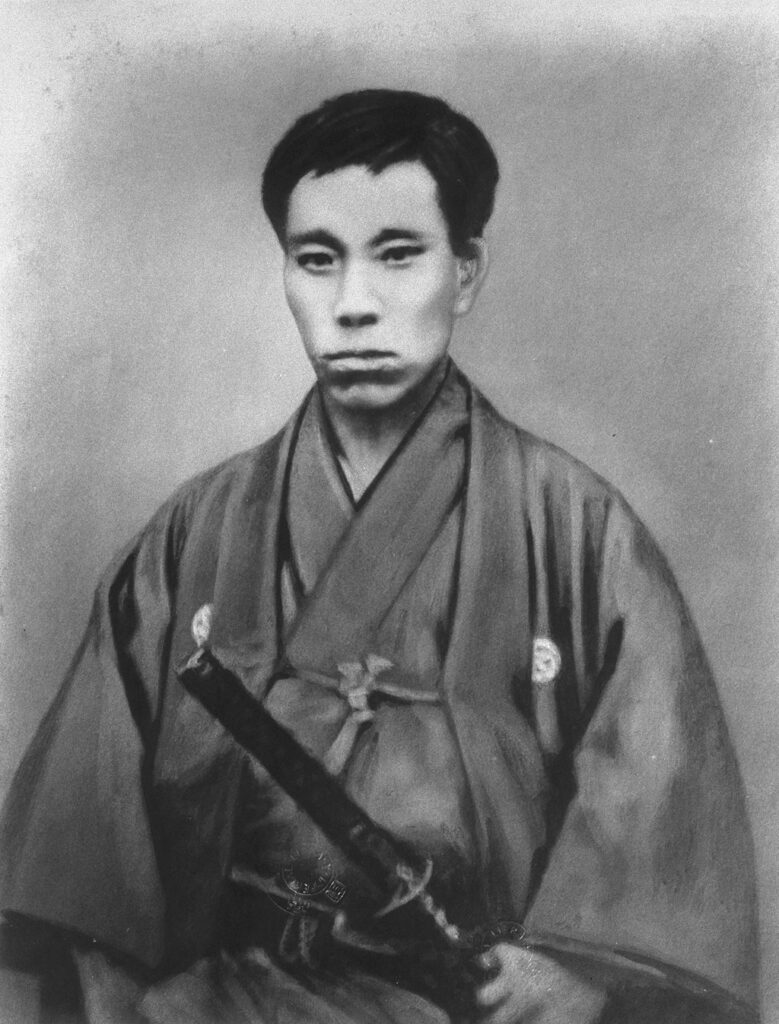
Takasugi Shinsaku was a samurai of the Choshu domain who was active during Japan’s late Edo period. From a young age, he studied at Yoshida Shoin’s private school, Shoka Sonjuku, where he learned the importance of incorporating Western technology and ideas.
In 1858, he went to Edo, and in 1859, he studied in Nagasaki, developing a particular interest in naval technology. A significant turning point for Shinsaku was his experience traveling to Shanghai in 1862. Witnessing the semi-colonial state of Shanghai under Western control, he felt a strong sense of crisis, believing that “Japan will be dominated by foreign countries if it remains under the current shogunate.” This solidified his resolve to overthrow the shogunate. Upon his return to Japan, he formed the Kiheitai, a new type of army that included not only samurai but also farmers and merchants, playing a crucial role in the movement to overthrow the shogunate.
Shinsaku was also a central figure in the sonno joi (revere the emperor, expel the barbarians) movement, taking on a leadership role in events such as the Kinmon Incident of 1864 and the Shimonoseki Campaign against the Four-Nation Alliance. However, he died of tuberculosis in 1867 at the young age of 29.
His ideas and actions significantly influenced the subsequent Meiji Restoration, and he is respected as a symbolic figure of Japan’s modernization and reform. Takasugi Shinsaku’s foresight and decisiveness brought about significant changes in Japanese society and continue to have a lasting impact on future generations.
A Brief Chronology of Takasugi Shinsaku
Let’s take a look at a brief chronological table to see the specific life events of Takasugi Shinsaku
| Year | Events |
| 1839 | Born as the eldest son of the Takasugi family in the Choshu domain (present-day Yamaguchi Prefecture). |
| 1857 | Invited by his childhood friend Kusaka Genzui, he joined Yoshida Shoin’s “Shoka Sonjuku.” |
| 1858 | Emerged as one of the four great disciples of Shoka Sonjuku and went to Edo for studies on the domain’s orders. |
| 1860 | After returning to Choshu, he married Masa, the second daughter of town magistrate Inoue Heihachiro. Participated in an inspection mission to Shanghai organized by the shogunate. |
| 1862 | Carried out the burning of the British legation. |
| 1863 | Ordered by the domain to defend Shimonoseki, he formed the Kiheitai and became its first commander. |
| 1865 ~ 1867 | First and Second Choshu Expeditions. |
| 1867 | Died of pulmonary tuberculosis at the age of 27. |
Meeting Yoshida Shoin in Childhood
Takasugi Shinsaku was born in 1839 (Tenpo 10) as the eldest son of Takasugi Koda, a samurai of the Choshu domain. At the age of seven, he began attending the terakoya “Yoshimatsu Juku,” where he met Kusaka Genzui, who would later become both a rival and a close friend.
In 1852 (Kaei 5), at the age of 13, Shinsaku started attending the domain school “Meirinkan.” However, feeling unsatisfied with the education there, he began attending Yoshida Shoin’s “Shoka Sonjuku” in 1857 (Ansei 4) through an introduction by Kusaka.
Yoshida Shoin was regarded as the most prominent thinker in Choshu at the time and accepted anyone into Shoka Sonjuku, regardless of their social status. Shinsaku’s family was conservative and wary of Shoin’s radical ideas, but Shinsaku was deeply drawn to Shoin’s thoughts and actions. Despite his family’s opposition, Shinsaku is said to have secretly sneaked out of his house every night to travel 3 kilometers to attend Shoka Sonjuku.
Shinsaku’s stubbornness was well-known. When Kido Takayoshi consulted Yoshida Shoin about correcting Shinsaku’s personality, Shoin replied, “If you correct his stubbornness, he will become a mediocre person. Takasugi will accomplish great things in ten years.” Hearing these words, Shinsaku became even more dedicated to his studies and grew more devoted to Shoin.
Takasugi Shinsaku at Shoka Sonjuku
Yoshida Shoin recognized the personalities of Takasugi Shinsaku and Kusaka Genzui, fostering a rivalry between the two to encourage mutual improvement. This approach led to them being regarded as the “twin jewels of Shoka Sonjuku.”
In 1858 (Ansei 5), when Takasugi Shinsaku was about to travel to Edo for further studies, Yoshida Shoin wrote in a letter, “Genzui’s talent enhances Shinsaku’s knowledge, and Shinsaku’s knowledge advances Genzui’s talent.” Yoshida expected that their mutual influence would lead to greater achievements. He also praised Shinsaku, saying, “Your sharpness in debate surpasses mine,” to encourage the anxious Shinsaku.
Through correspondence with Yoshida Shoin, Takasugi Shinsaku pondered, “Where is the place for a man to die?” In response, Shoin said, “If there is hope for immortality after death, die at any time. If there is hope for great achievements in life, live as long as possible.” This view on life and death had a significant impact on Shinsaku.
Yoshida Shoin’s educational philosophy contributed to Takasugi Shinsaku’s later formation of the Kiheitai and participation in the sonno joi (revere the emperor, expel the barbarians) movement. Under Shoin’s guidance, Shinsaku grew to become an important figure in late Edo period Japan.
Yoshida Shoin’s Execution
In 1859 (Ansei 6), the shogunate launched the Ansei Purge to suppress opposition forces, leading to Yoshida Shoin’s arrest and imprisonment in Edo’s Tenmacho Jail. Takasugi Shinsaku frequently visited Shoin, bringing supplies and providing care.
Concerned about the possibility of Takasugi Shinsaku and others attempting to rescue Yoshida Shoin, the Choshu domain ordered Shinsaku to return home. As a result, Yoshida Shoin was escorted back to Hagi and was beheaded along the way. Takasugi Shinsaku deeply mourned the death of his mentor and carried Shoin’s teachings and spirit in his heart.
Takasugi Shinsaku’s Inspection of Shanghai
After returning to Hagi, Takasugi Shinsaku married Masa, who was known as “the most beautiful woman in Hagi,” at the urging of his parents. However, he soon set out on a practical sailing exercise to Edo and a journey for swordsmanship training in northern Kanto and Hokuriku. During this journey, he met Sakuma Shozan in Shinshu, who taught him that “one must see foreign countries,” which strongly inspired him to learn about other countries. This was a dream that even his mentor, Yoshida Shoin, had not fulfilled.
In 1862 (Bunkyu 2), 24-year-old Takasugi Shinsaku was ordered by the Choshu domain to conduct an overseas inspection and visit Shanghai, China. There, he witnessed Chinese people being harshly exploited by Westerners, which left a strong impression on him. He felt that “Shanghai is a territory of Britain and France,” and he became deeply alarmed.
In his diary during his stay in Shanghai, Takasugi wrote: “Seeing the situation in Shanghai, the Chinese are entirely subjugated by foreigners. When British and French people walk the streets, the Chinese yield the way. Indeed, although Shanghai is a territory of China, it can be said to be a vassal state of Britain and France. Japan must be cautious. This is not just about China.” Upon his return on July 14, he concluded, “If our divine land does not quickly devise strategies for exclusionism, we will follow in China’s footsteps.”
Through this experience in Shanghai, Takasugi Shinsaku understood the current state of China and the movements of the great powers, awakening to a nationalist sense of crisis. He became convinced that strengthening the nation and implementing exclusionism were essential for Japan’s survival, and he consistently pursued the paths of exclusionism, opening the country, and overthrowing the shogunate thereafter.
Takasugi Shinsaku’s Attack on the British Legation and Formation of the Kiheitai
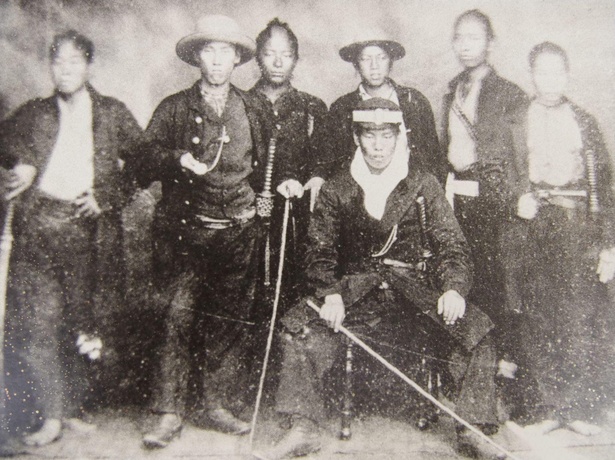
After returning from an overseas inspection, Takasugi Shinsaku was disappointed by the shogunate’s incompetence and resolved to overthrow it. The Choshu domain tried to restrain his radical actions, but in December 1862, Shinsaku requested a leave from the domain and, along with his comrades, set fire to the British Legation, which was under construction.
On May 10, 1863, the Choshu domain opposed the opening of the country and fired upon foreign ships sailing along the coast. However, a month later, they faced retaliation from the fleets of Britain, France, the Netherlands, and the United States, and the Choshu domain suffered a crushing defeat. Faced with this situation, the Choshu domain sought Shinsaku’s advice.
Shinsaku proposed, “Let us gather volunteers with a will and establish a unit, naming it ‘Kiheitai.'” The formation of the Kiheitai was based on Yoshida Shoin’s teaching of “grassroots uprising,” recruiting those with a will regardless of their status or position. Not only samurai but also farmers, fishermen, and townspeople were recruited as soldiers, and participation was voluntary rather than through conscription, which was revolutionary. The Kiheitai were equipped with modern weapons and tasked with defending Shimonoseki using Western-style strategies.
However, conflicts arose between the samurai class and civilian volunteers, leading to an incident known as the “Kyohouji Incident,” where a Kiheitai soldier attacked a samurai. As a result, Shinsaku was dismissed as the commander of the Kiheitai after only three months. Subsequently, he continued to clash with other domain officials over military policies, attempted to leave the domain, but was captured and imprisoned.
First and Second Choshu Expeditions by Takasugi Shinsaku
After the Choshu domain was expelled from Kyoto in the “Coup of August 18” in 1863 (Bunkyu 3), they attempted to eliminate the Aizu domain leader Matsudaira Katamori in the “Kinmon Incident” the following year in 1864 (Genji 1), but failed and were labeled as enemies of the court (“Choteki”). As a result, the shogunate mobilized daimyos from across the country and launched the “First Choshu Expedition.” Additionally, Western fleets occupied the Shimonoseki battery positions and demanded compensation of 3 million dollars (equivalent to 90 billion yen at the time).
In this crisis, the Choshu domain placed their hopes on Takasugi Shinsaku, releasing him and entrusting him with ceasefire negotiations with the Western fleets. Shinsaku asserted that the compensation should be demanded from the Edo shogunate and refused to pay. This firm stance led to the compensation being demanded from the shogunate, and a ceasefire was established.
However, the First Choshu Expedition continued. The shogunate’s army of 150,000 was overwhelmingly larger than the Choshu domain’s army of 4,000. Within the Choshu domain, the faction advocating loyalty to the emperor and expelling foreigners (the Seigi faction) attempted to expel the loyalist faction. Shinsaku went into hiding in Fukuoka, Kyushu. Subsequently, the Choshu domain accepted the shogunate’s demands and executed three elders and four military advisors.
Enraged by this, Shinsaku returned to Choshu and called for an uprising. Although only 84 people gathered initially, they raised an army at Kozanji Temple and occupied the government office in Shimonoseki. Shinsaku then called for an uprising within the domain, eventually amassing an army of over 3,000 and advancing to Hagi, where they purged the loyalist faction. This enabled the Choshu domain to once again move towards overthrowing the shogunate.
Later, Shinsaku did not take any official positions within the domain and aimed to study in England, heading to Nagasaki. However, in 1866 (Keio 2), the shogunate launched the “Second Choshu Expedition,” and the Choshu domain called Shinsaku back. As the naval commander, Shinsaku led the Choshu forces to successive victories against the shogunate’s army with his strategies. This established the Choshu domain as a central force in the movement to overthrow the shogunate.
Cause of Takasugi Shinsaku’s Death
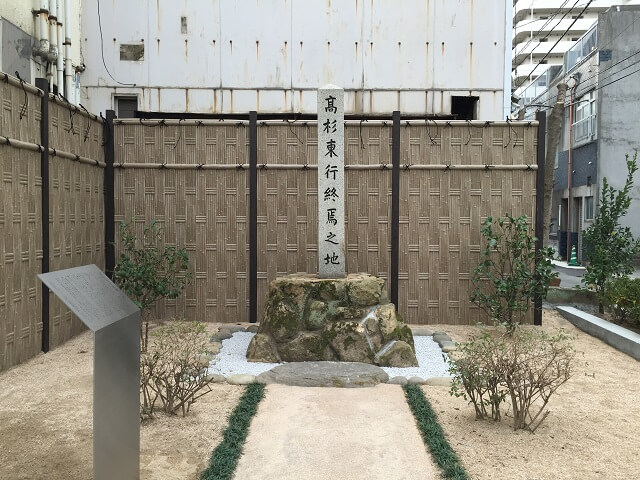
Takasugi Shinsaku died of pulmonary tuberculosis, which was considered an incurable disease at the time. Although he was active in the movement to overthrow the shogunate, he passed away before witnessing the Meiji Restoration. He was only 27 years old. During the Four Borders War in 1866, Takasugi began to complain of ill health around the time the battle at Kokuraguchi started. He frequently suffered from fever and persistent coughing, symptoms caused by a congenital respiratory condition. Although his symptoms temporarily subsided, his vigorous efforts for the domain worsened his condition, leading to hemoptysis.
Takasugi spent much of his time bedridden and moved to a small house called “Tokoan,” which he built in Sakurayama, Shimonoseki, with his lover, Ouno. During periods of improved health, he would let his guard down and discuss peace conditions late into the night, only to suffer from hemoptysis again.
Takasugi expressed his feelings of being left behind by the times with the poem, “People are people, I am myself, living in the depths of the mountains, to know the world’s vicissitudes.” Additionally, when Nomura Boto, who visited him, gave him the first half of a poem, “Living in a world without interesting things,” Takasugi completed it with, “It is the heart that makes it interesting.”
In March 1867, Takasugi’s condition suddenly worsened. His parents and wife, Masa, visited him, but his condition was very severe, and he experienced significant hemoptysis. At the end, he was attended to by Ouno, Boto, and a monk named Kairyu Gan, leaving no place for Masa.
In the same month, upon hearing that Takasugi’s end was near, the domain rewarded his achievements by granting 100 koku to the Tani family, starting with Takasugi. He passed away late at night on April 13, 1867. According to his will, his remains were buried at Shimizuyama in Yoshida Village, Asa District, where the Kiheitai headquarters had been.
His lover, Ouno, entered the priesthood, took on the name Tani Baisho, and continued to hold memorial services for Takasugi. Today, Tokoan is a place of rest and relaxation for many people, with beautiful flowers blooming throughout the seasons.
Takasugi Shinsaku’s Personality
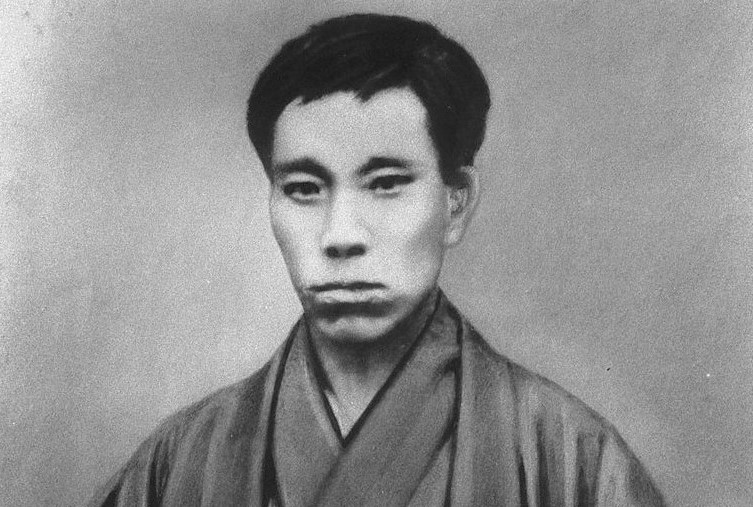
Takasugi Shinsaku was known for his extraordinary abilities and strong personality. He was extremely stubborn, fully dedicating himself to things that interested him while showing no concern for anything else. This stubbornness greatly influenced both his successes and challenges.
Shinsaku’s stubborn personality was evident from the time he joined Yoshida Shoin’s Shoka Sonjuku. He would immerse himself deeply in things he liked and remain indifferent to everything else. This attitude sometimes caused conflicts with those around him. However, Shoin did not see Shinsaku’s stubbornness as a flaw but rather as a sign of his potential as a leader.
Yoshida Shoin respected Shinsaku’s stubbornness and chose not to hastily correct it but to allow it to develop over time. Through conversations with his friend Kido Takayoshi, Shoin sent letters to Shinsaku, advising him on how to turn his stubbornness into a strength. Shoin believed it was important to avoid excessive interference, famously stating, “Leave Takasugi alone for ten years.”
This approach gave Shinsaku the opportunity to reflect deeply on his own life. He accepted Shoin’s advice and learned to harness his stubbornness as part of his leadership. For example, when forming the Kiheitai, he upheld his beliefs and demonstrated the ability to lead a diverse group of people.
Shinsaku’s stubborn personality also drove him to continuously take on new challenges. He studied Western technology and culture, pushing for reforms with Japan’s future in mind. His stubbornness thus contributed to both his personal growth and societal change.
Ultimately, Takasugi Shinsaku’s stubbornness became his strength, playing a crucial role in late Edo period Japan. Under Yoshida Shoin’s guidance, he turned his personality into an asset, forging his own path even in challenging times. His life exemplifies the potential to turn weaknesses into strengths and the possibility for human growth.
Takasugi Shinsaku’s Episode
Finally, let’s look at an episode about Takasugi Shinsaku. Takasugi Shinsaku has various episodes that are a must-see!
Was He Self-Conscious About His Face and Height?
Takasugi Shinsaku was described as having a long face, to the point where it was said, “The horse has a rounder face than the rider.” He was also self-conscious about his height. There are various accounts of his height, ranging from 152 to 158 cm, but considering that the average height of Japanese men at that time was about 155 cm, Shinsaku was either slightly shorter than or about the same as the average.
Because of this insecurity, Shinsaku would not stand straight when taking photos; he would either bend his waist or sit in a chair. As a result, there are no existing photos of him standing upright.
Additionally, his friends and comrades, such as Kusaka Genzui and Kido Takayoshi, were quite tall, standing over 180 cm and around 174 cm respectively, which likely exacerbated Shinsaku’s self-consciousness. Other notable figures of the Bakumatsu period, like Saigo Takamori (about 180 cm), Okubo Toshimichi (about 178 cm), and Sakamoto Ryoma (about 170 cm), were also quite tall, which may have influenced Shinsaku’s feelings of insecurity.
Was Takasugi Shinsaku’s Gifted Pistol the One That Saved Sakamoto Ryoma’s Life During the Teradaya Incident!?
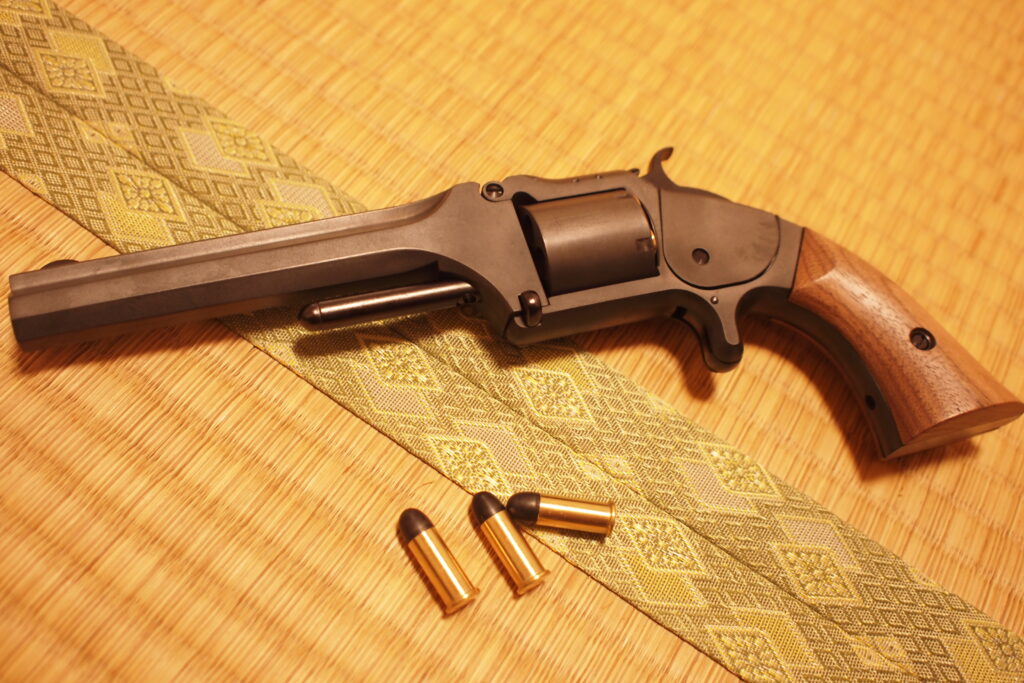
On January 23, 1866, Tosa domain samurai Sakamoto Ryoma was attacked by government forces at the Teradaya inn in Fushimi. It is said that the pistol given to him by Takasugi Shinsaku saved Ryoma’s life during this attack.
This pistol was a state-of-the-art weapon in Japan at the time, the “Smith & Wesson No. 2” manufactured by the American Smith & Wesson company. Ryoma mentioned in a letter that this pistol was a gift from Takasugi Shinsaku.
“With the pistol sent to me by Takasugi, I fought them off…” (Letter to Kido Takayoshi dated February 6, 1866)
This episode, where the pistol given by Takasugi Shinsaku saved Sakamoto Ryoma’s life during the Teradaya attack, symbolizes the bonds and fates of the heroes in the tumultuous times at the end of the Edo period.
Did He Decide His Marriage Partner by Lottery!?
In the first year of the Bunkyū era (1860), shortly after returning from his studies in Edo, Takasugi Shinsaku, at the age of 22, married Masa. Masa, at 16, was considered one of the most beautiful women in Hagi and came from a well-respected family, making her highly sought after for marriage. It is said that in the end, her marriage to Shinsaku was decided by drawing lots.
After their marriage, Shinsaku and Masa often missed each other, and they hardly spent any substantial time together. Despite this, Shinsaku frequently wrote letters to his wife and sent her items that he thought would please her, never forgetting to show his care.
Once, after the newly formed Kiheitai suffered casualties, Shinsaku prepared a suicide note, ready to commit seppuku. In the letter, he instructed Masa to protect the family and continue the memorial services if he died, emphasizing the virtues of a samurai’s wife. He also expressed his deep feelings, writing, “Even in death, I will not forget you.” Masa, upon reading this letter, could not hold back her tears.
In this way, despite his busy life, Takasugi Shinsaku always showed consideration and maintained a deep bond with his wife Masa. His care and love for his wife reflect his character well.
Takasugi Shinsaku: A Cultured Man Who Carried a Shamisen!?
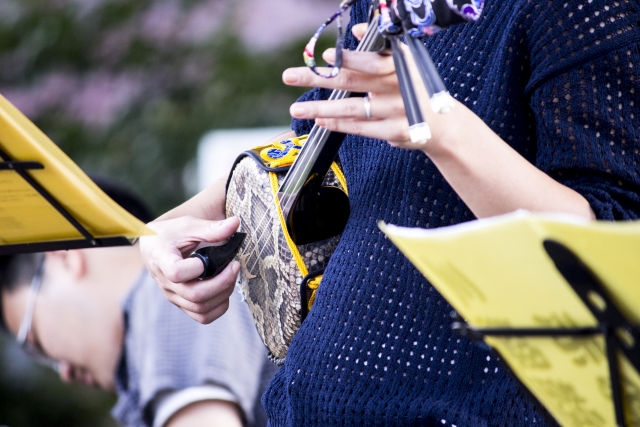
Takasugi Shinsaku was a cultured man who carried his own shamisen wherever he went. Whether he was on the run to Shikoku with his lover, Ouno, or leading the Kiheitai into battle, the shamisen was always by his side.
Shinsaku is said to have composed many dodoitsu (a type of Japanese poetry) such as, “I wish I could kill all the crows in the world and sleep in with you,” and “Why worry? Spend your time watching the river flow by the willow trees.” It is believed that these songs, sung to the accompaniment of the shamisen, were passed down as his creations. Shinsaku’s love for elegance and enjoyment was that profound.
This cultured side of Shinsaku enriched his personality and was one of the reasons he was beloved by many. Despite the many battles and hardships in his life, he never forgot to find enjoyment in the sound of the shamisen.
Favorite Sword: “Akinokuni Saeki Sho Ju Fujiwara Sadayasu”
Takasugi Shinsaku was a master of the Yagyu Shinkage-ryu school of swordsmanship and owned a favorite sword called “Akinokuni Saeki Sho Ju Fujiwara Sadayasu.” This sword originally belonged to a Satsuma domain samurai named Kajiwara Tetsunosuke, who exchanged it with Tosa domain samurai Tanaka Mitsuaki. Later, Takasugi Shinsaku acquired it, saying he “definitely” wanted it.
It is believed that “Akinokuni Saeki Sho Ju Fujiwara Sadayasu” is the sword Shinsaku is holding in a photograph where he is gripping a Japanese sword. This sword is thought to have been forged by a swordsmith from the Naminoue Kaji group. The Naminoue Kaji group traces its origins to the swordsmith Yukiyasu, who moved from Kyoto to Satsuma Province at the end of the Heian period. The swordsmiths of Naminoue continued their craft in Naminoue, Taniyama District, Satsuma Province. It is said that one of the Naminoue swordsmiths forged this particular sword in Aki Province, but the sword’s whereabouts became unknown after Takasugi Shinsaku’s death and it remains lost to this day.
Additionally, Shinsaku also owned a Japanese sword known as “Awataguchi.” The Awataguchi school of swordsmiths was named after the Awataguchi area in Higashiyama Ward, Kyoto, and they had been supplying swords to the Imperial Court since the Heian period. The Awataguchi school is renowned for the precision of their steel and is considered the pinnacle of swordsmithing across all periods and schools. However, the specific Awataguchi sword owned by Shinsaku is not known.
Summary
How was it? This time, we looked at Takasugi Shinsaku. Takasugi Shinsaku was a dynamic figure who played an active role as a Choshu domain samurai during the late Edo period in Japan. He was a student of Yoshida Shoin, formed the Kiheitai, and promoted the anti-shogunate movement. After observing Shanghai, he realized the threat posed by the West and strongly advocated the necessity of both exclusionism and opening the country. Additionally, as a cultured individual, he loved playing the shamisen and left behind many dodoitsu (a type of Japanese poetry). Despite overcoming insecurities about his height and various hardships, Takasugi Shinsaku made a significant impact on Japan’s modernization with his strong will and actions.



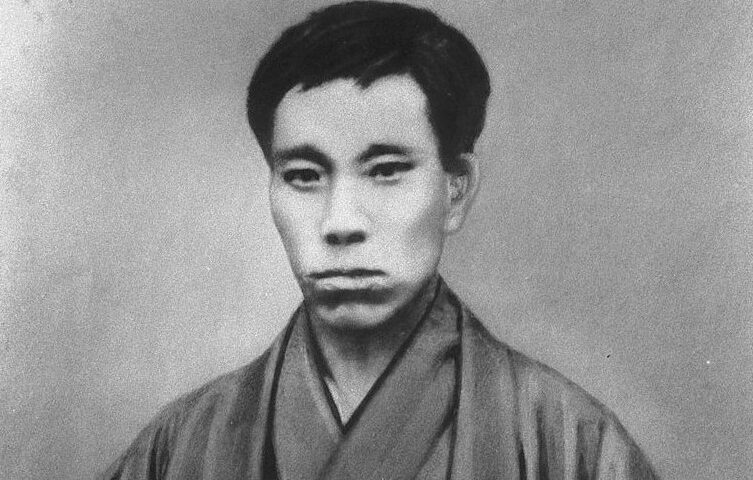
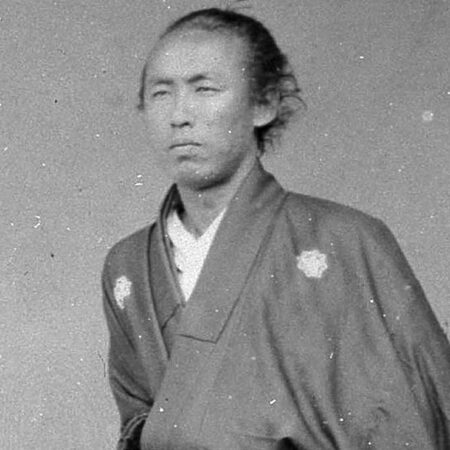
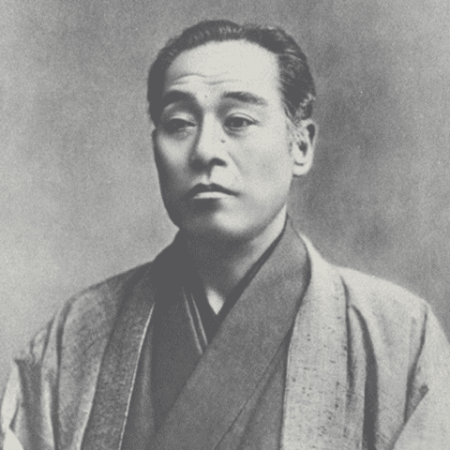
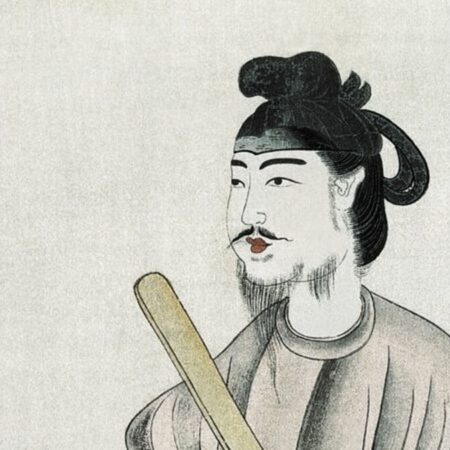
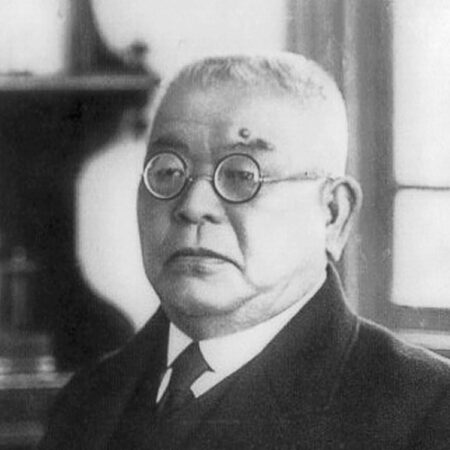
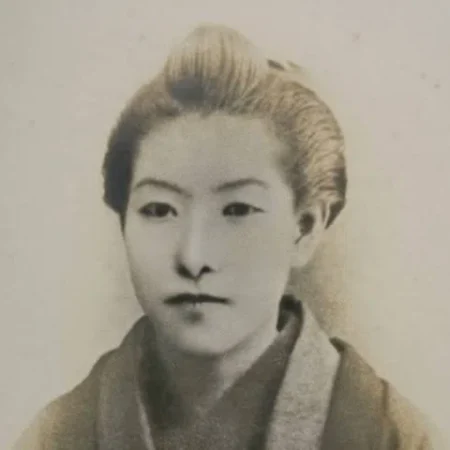
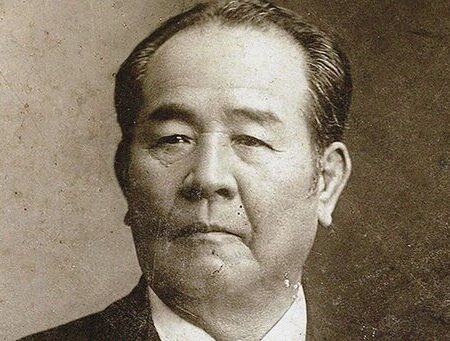
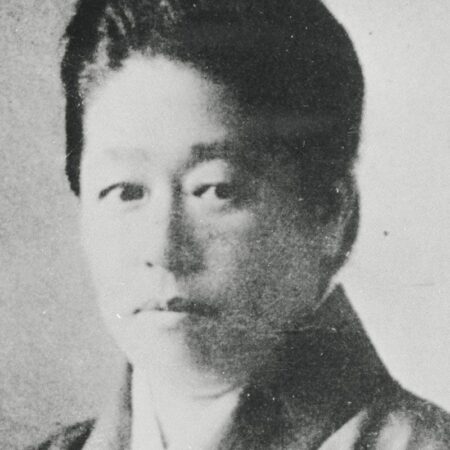
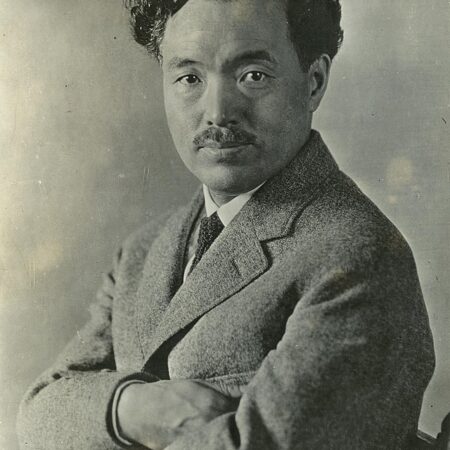



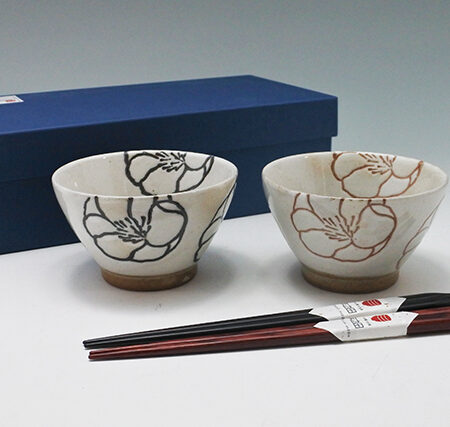
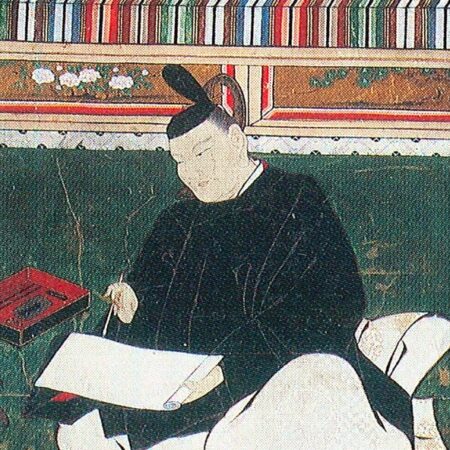
コメント